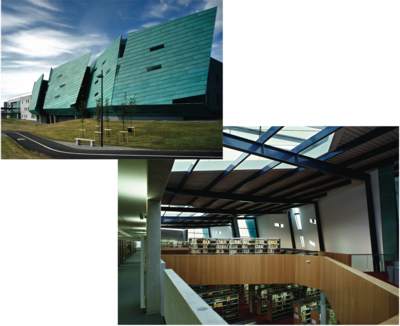Helping nature with effective control
Achieving the best results from a natural ventilation system requires optimal control of a number of parameters. John Fallon explains the importance of a fully integrated approach.With the move to lower-carbon buildings, there are now very few new-build projects or major refurbishments where natural ventilation isn’t at least considered as an alternative to mechanical ventilation and cooling. In many of these projects, the viability of opting for a natural-ventilation solution will depend on how closely a variety of parameters can be controlled.
Truly integrated This is the key challenge facing building-services engineers when designing natural-ventilation systems, because to achieve optimum performance they will need to juggle a range of elements. These elements include motorised blinds and windows as well as the mechanical plant and lighting — necessitating a truly integrated building energy management system (BEMS).
 |
A comprehensive control strategy ensures the effectiveness of the natural-ventilation system of the Galway/Mayo Institute of Technology. Temperature and carbon-dioxide concentrations are the key control parameters. |
For example, if a space is exposed to high solar heat gains it may not be possible for natural ventilation to maintain required temperature levels without the need for any additional mechanical cooling. However, if solar shading is used to minimise solar heat gains, even if this necessitates some use of electric lighting, the overall energy consumption may be less than installing mechanical ventilation or cooling. Similarly, the effectiveness of any natural ventilation may be related to wind speed and direction, so that motorised louvres or windows are adjusted in relation to these parameters. A case in point is the control strategy used for ventilation in the new learning resource centre at the Galway/Mayo Institute of Technology (GMIT), which clearly illustrates the right control strategy can greatly enhance the viability of a natural-ventilation system. Divided into a lecture block and a library/IT block, the building features an innovative free-form frontage consisting of three sculptured copper sails that form part of the library’s natural-ventilation system. Dynamic thermal modelling by consulting engineers Varming confirmed that natural ventilation would be viable for the library, despite it having a cross-section of 36 m — and that control would play a critical role in this. The library at GMIT is a 2-storey building with three atria located centrally and creating a stack effect. Outside fresh air is introduced through low-level dampers located in the external sails on the coastal side of the building. This air then passes over temperature-controlled finned-tube heaters which can pre-heat the air when necessary. Exhaust air leaves the library through dampers located at roof level on the northern side, which contribute to the stack effect. Space heating in the library is provided by radiator circuits. During winter, the ventilation is controlled by a combination of temperature and carbon-dioxide concentration to ensure that only minimum fresh air is introduced. Temperature has the highest control priority and once the 21ºC set-point has been reached control switches to carbon-dioxide levels, which are not allowed to exceed 500 ppm. In summer, the dampers are controlled in relation to internal temperatures, supplemented by automatic opening of Duggan windows in the northern wall if temperatures reach 24ºC. In addition, inlet-damper settings are controlled in relation to wind speed, as measured by a weather station on the roof. This is because the prevailing westerly winds have the potential to create strong draughts and wind noises, so the dampers are closed in proportion to increasing wind speeds. The configuration of the Cylon building energy management system (BEMS) by system integrators Control Technology allows for these parameters to be modified in the light of ongoing experience.
Comprehensive strategy GMIT illustrates the need for a comprehensive control strategy when using natural ventilation, with a requirement for the BEMS to respond to inputs from a wide range of sensors and issue instructions to an even wider range of motors and other devices. Inevitably, this will necessitate interfacing between different protocols. At the same time, low-energy projects such as GMIT are increasingly making use of KNX or EIB networks for the control of blinds and natural-ventilation systems, while the central building-management system is more likely to be using BACnet or a BEMS protocol such as Unitron. Here, the BEMS protocol will need to interface with the KNX/EIB networks to achieve effective control, which has the potential to increase the amount of programming and interfacing required. To address the issues of programming and interfacing and to make such projects easier in the future, Cylon and other vendors have been working to develop standard interfaces. An example is the new KNX gateway, that enables data from KNX networks to interface easily with Cylon’s BEMS protocol and provide the level of control integration necessary for this type of project. It can be combined with the standard motor interface, designed for controlling intelligent drives for shutters, windows and Sun protection systems — providing precise movement to intermediate positions and feedback of actual positions. As natural ventilation is increasingly seen as a core element in creating low-carbon buildings, we will undoubtedly see wider use of the cost-effective, open standard KNX protocol. Systems that facilitate communication with other networks will, therefore, prove invaluable.
John Fallon is product marketing manager with Cylon Controls Ltd.
Related links:








